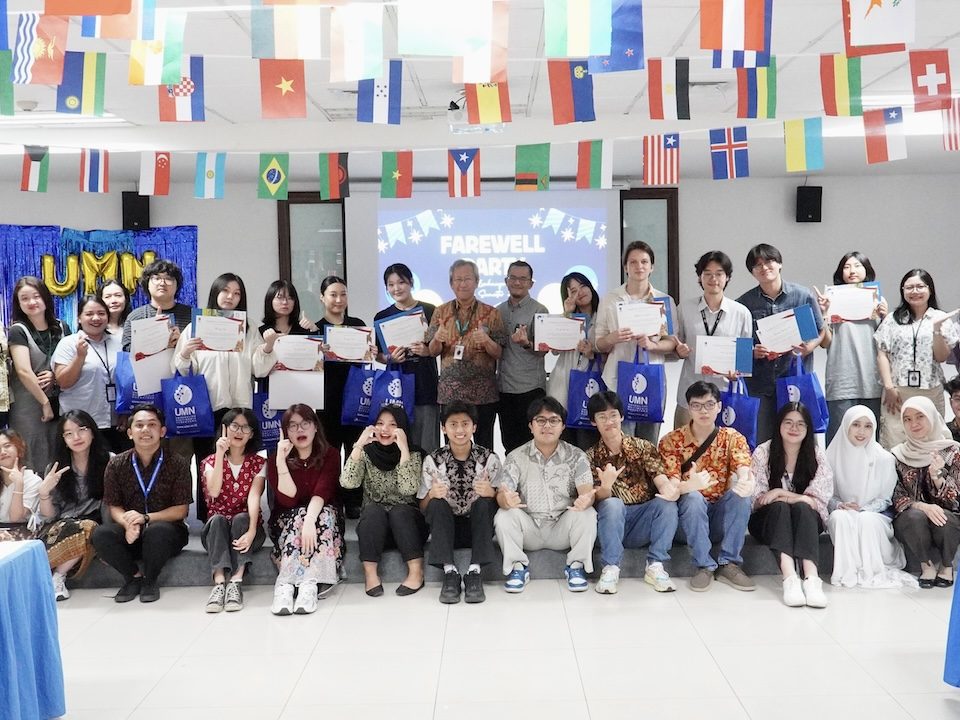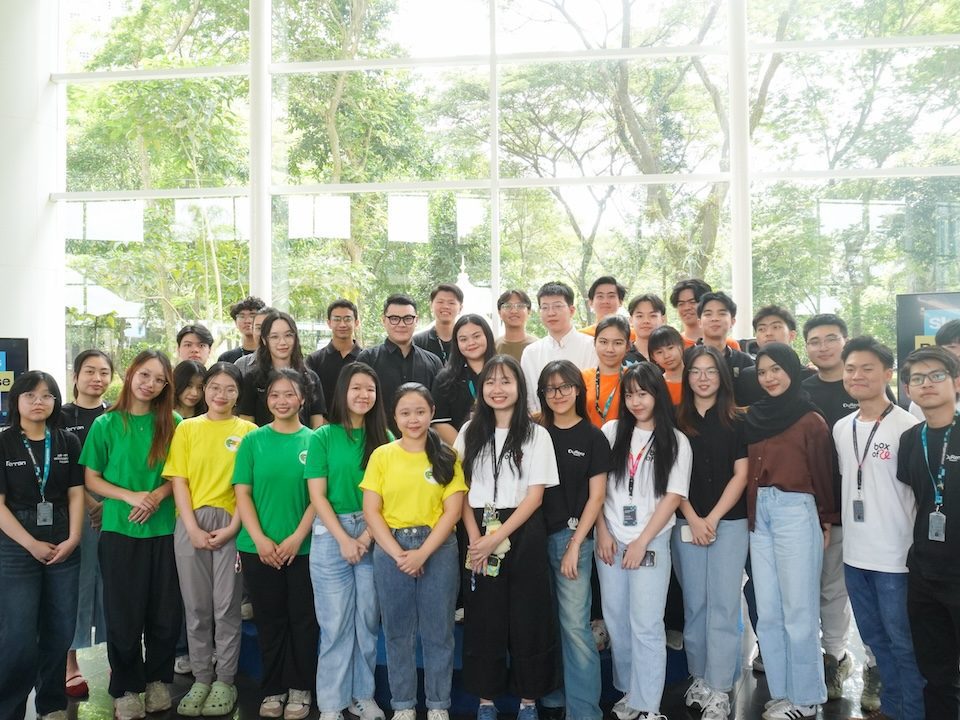
Kunjungan Prof. Dr. Muhammad Imran Ahmad ke UMN
November 23, 2024
Dosen FIKOM UMN Berbicara tentang Pariwisata Berkelanjutan di COP29, Baku, Azerbaijan
November 25, 2024Sustainability has always been embedded in the way Universitas Multimedia Nusantara (UMN) develops its campus and manages daily operations. From the very beginning, the university designed its iconic buildings with energy efficiency in mind. The use of eco-friendly double-skin facades is a hallmark of UMN’s green architecture, specifically tailored for Indonesia’s tropical climate. Research led by Puspita Dewi and her team demonstrated that these facades function as a “buffer system,” reducing cooling energy demand while regulating temperature, airflow, noise, and humidity. Beyond achieving thermal comfort standards, this innovation is paving the way for greener buildings that respond to local environmental needs.
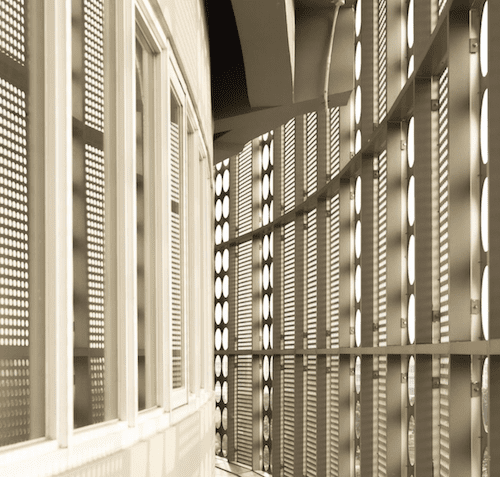
Energy-Efficient Double Facade Design Implemented at UMN (Doc. UMN)
In terms of mechanical systems, a major step forward has been the installation of a Magnetic Chiller system equipped with an advanced Variable Frequency Drive (VFD). This technology dynamically adjusts cooling output based on real-time temperature requirements, ensuring energy is used only when necessary. Compared to older systems, the new chillers deliver a much higher efficiency ratio while cutting energy use and reducing the university’s carbon footprint. Complementing this system, UMN also employs Variable Speed Drivers (VSDs) across various facilities, fine-tuning motor speeds according to load requirements. Together, these technologies allow smoother operations, reduce energy waste, and support the institution’s long-term green mission.
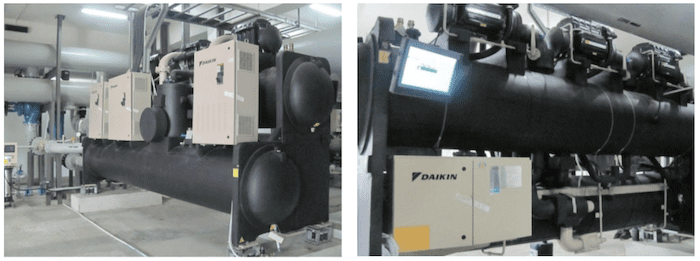
Magnetic Chiller with high energy efficiency and three compressors equipped with Variable Frequency Drive (VFD) for optimized performance.
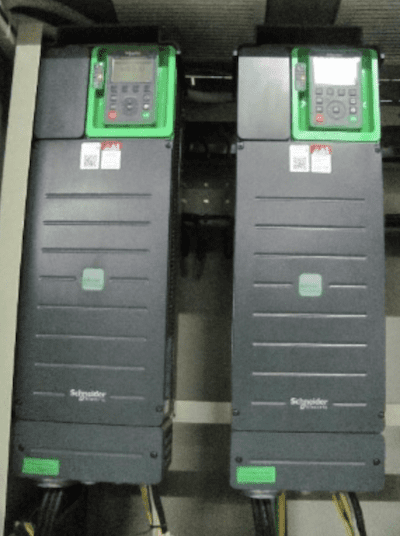
Variable Speed Drive (VSD) Technology Used in Motor Systems for Energy Efficiency (Doc. UMN)
Lighting has also been a priority in the university’s efficiency plans. Traditional fixtures have been replaced with energy-saving LED systems, which not only lower electricity consumption but also provide longer service life. In public spaces such as restrooms, motion-activated lights with passive infrared (PIR) sensors ensure that energy is only used when the spaces are occupied.
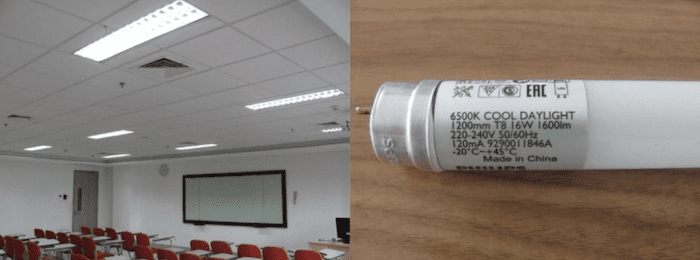
Campus lighting converted to energy-efficient LED systems to reduce electricity consumption (Doc. UMN)
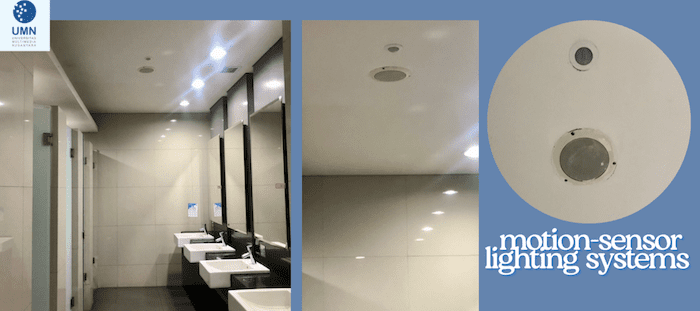
Installation of motion-sensor lighting systems to optimize energy use in low-traffic areas (Doc. UMN)
Broader commitments at the policy level further strengthen these initiatives. By joining the Green Building program of the Indonesian Institute of Architects (IAI), UMN aligns future campus upgrades with officially recognized national standards for sustainable buildings. Internally, the universities Green Campus Management Guidelines provide a comprehensive framework that mandates efficient energy use, integrates environmental management principles into strategic planning, emphasizes harmony between buildings and their surroundings, and expands green open spaces. The guidelines also reinforce leadership commitment, the adoption of energy-saving equipment, and the exploration of alternative energy sources.
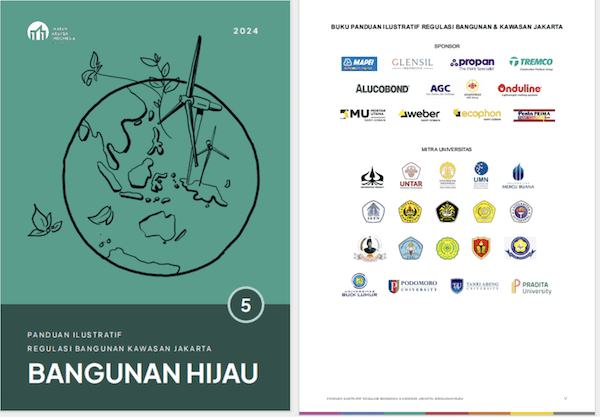
UMN’s Contribution in Creating a Green Building eBook, Accessible to the Public and Serving as a Reference for the National Standard. (Source: https://iai-jakarta.org/ebook
Each of these initiatives, whether through architectural design, smart technology upgrades, or policy alignment—represents another step toward a more sustainable campus. By combining innovative building solutions with strong institutional frameworks, UMN continues to raise the standard for energy efficiency, demonstrating that even incremental changes can lead to meaningful, long-term environmental impact.

